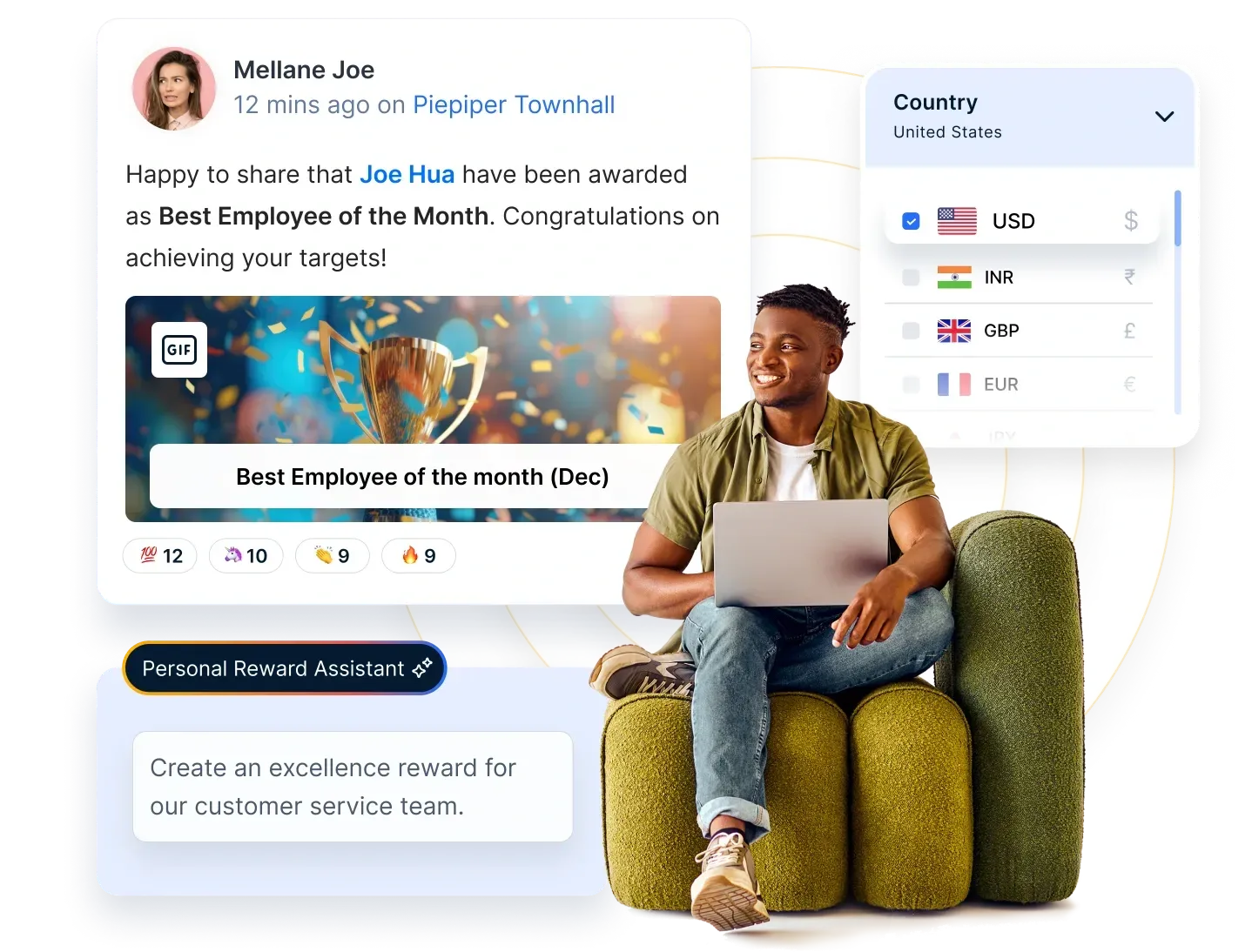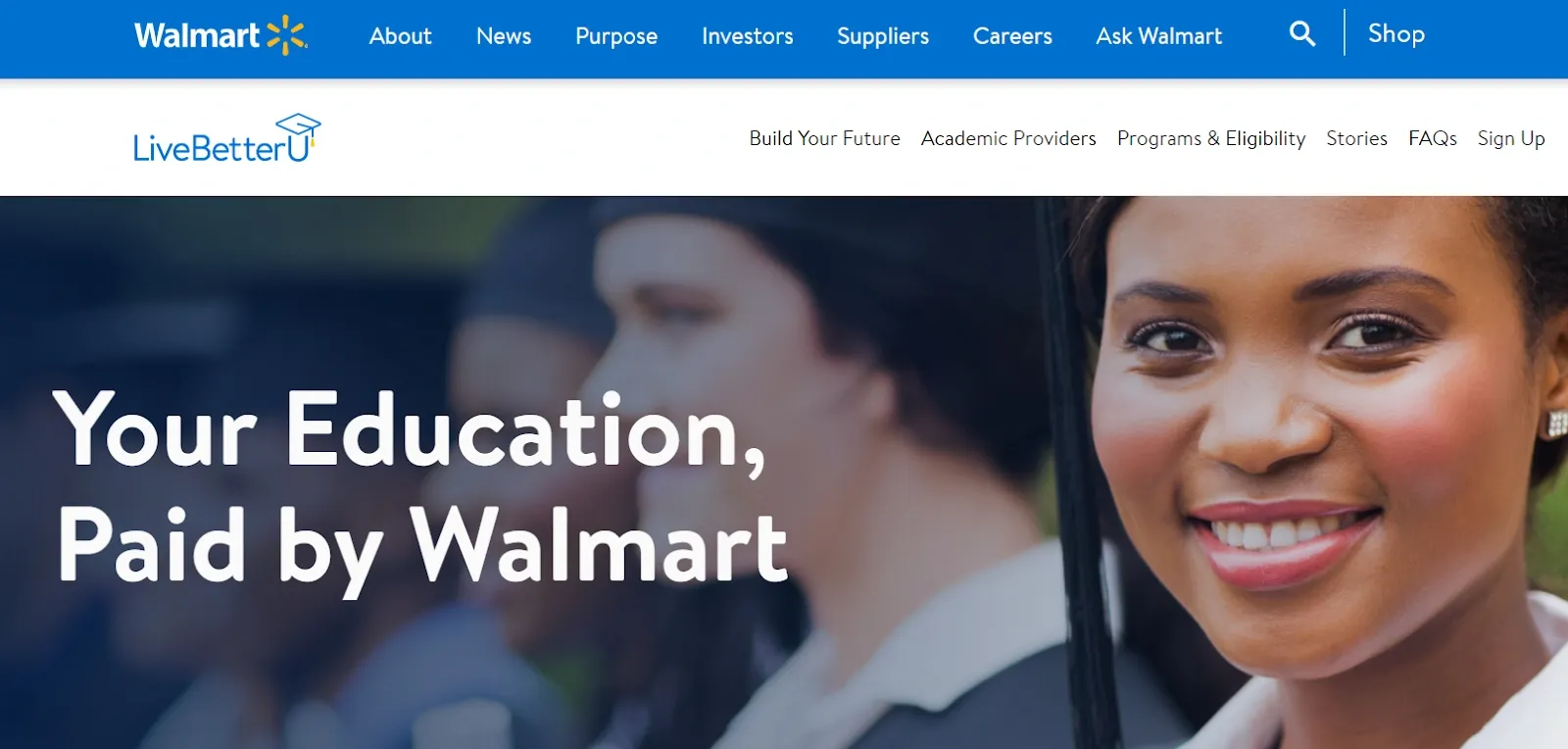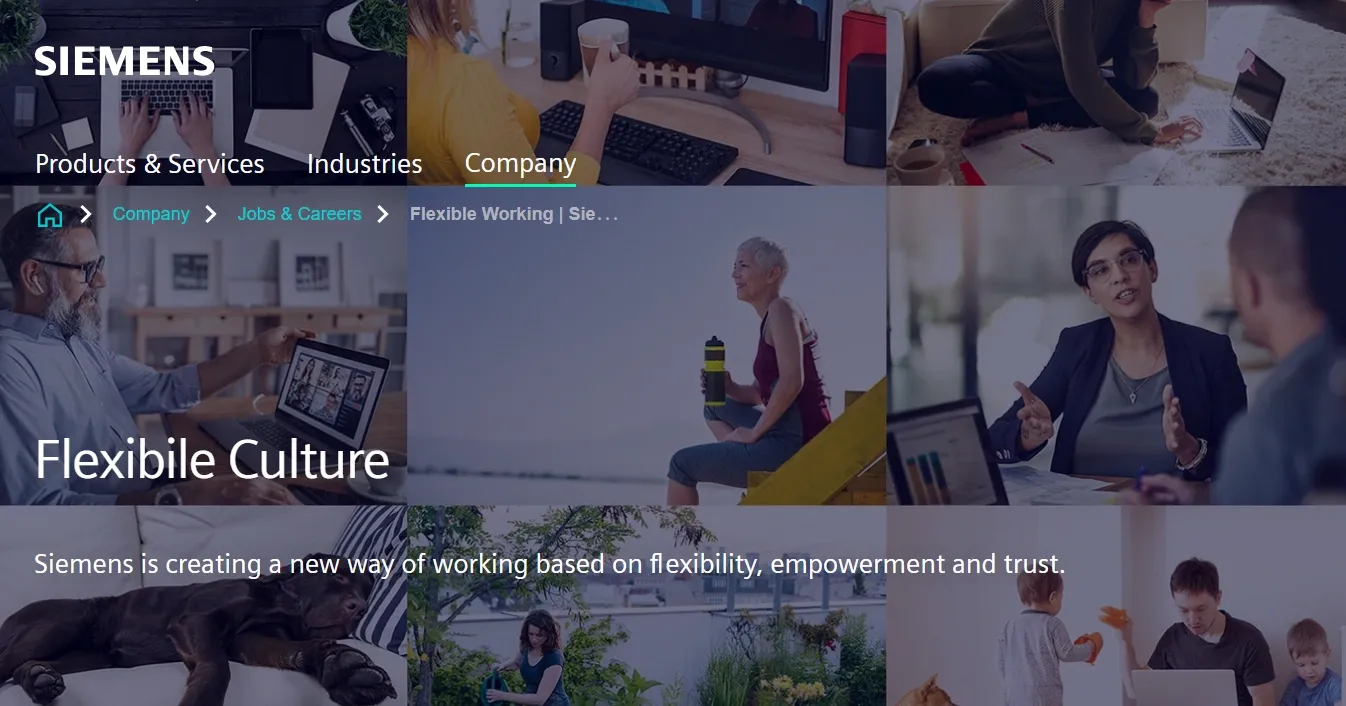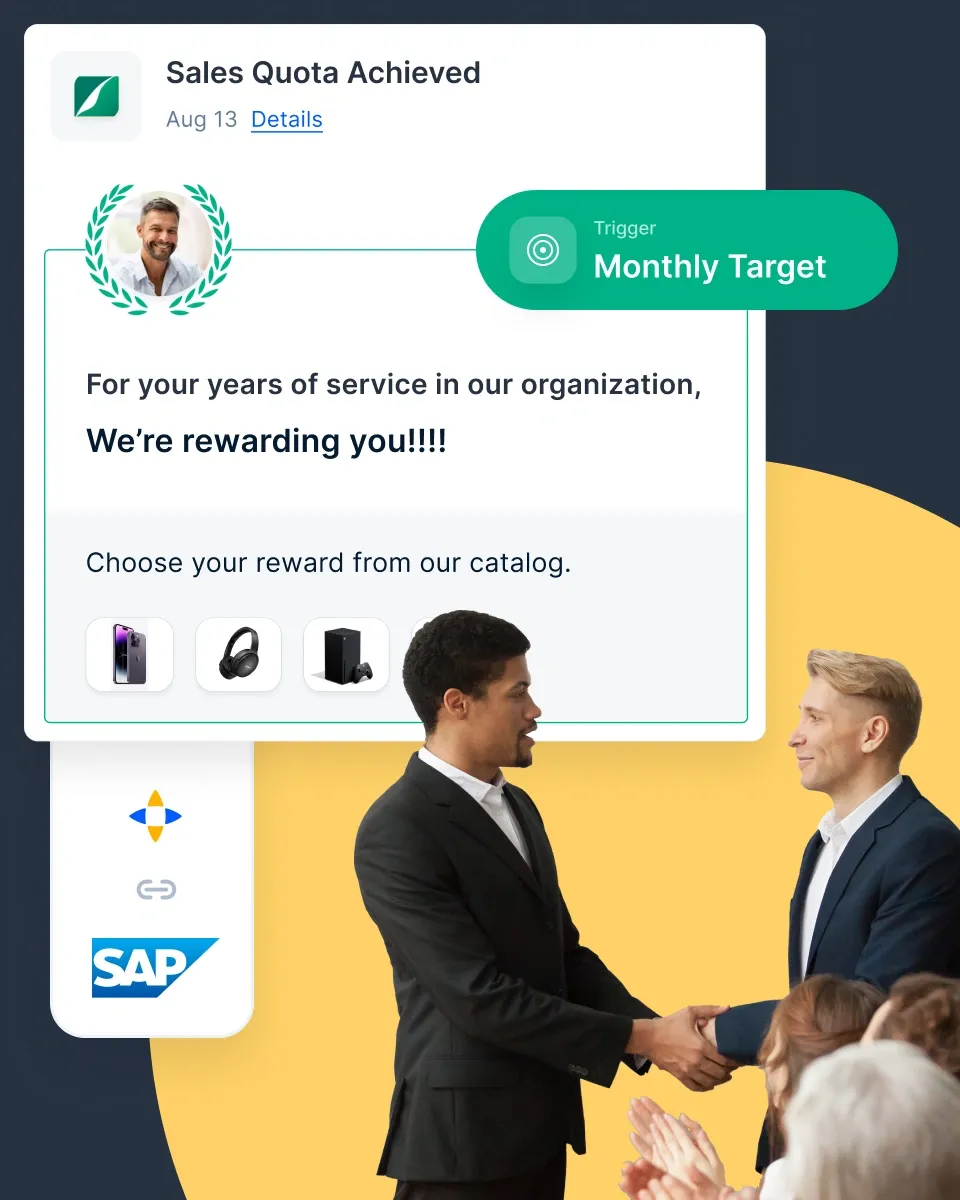Employee Retention Program & Incentive Ideas to Keep Your Best People
Explore powerful incentives for an employee retention program that improve engagement, boost morale, and keep your best employees committed for the long term.
Di halaman ini
Attracting top talent is only half the battle—keeping them engaged and committed is the real challenge. With competition for skilled employees increasing, businesses must invest in employee retention programs that foster loyalty and job satisfaction.
A well-structured retention strategy goes beyond salary—it involves creating a work environment where employees feel valued, supported, and motivated to grow. Employee retention incentives, such as performance bonuses, wellness perks, and career development opportunities, play a crucial role in reducing turnover and strengthening workforce stability.
But what are the most effective retention incentives for employees? From recognition programs to flexible work arrangements, this article explores proven strategies that help organizations retain their best talent and build a thriving workplace.
Mari kita selami.
What is an employee retention program?
An employee retention program is a structured strategy designed to keep employees engaged, satisfied, and committed to an organization long-term. These programs focus on reducing turnover by improving workplace culture, providing growth opportunities, and ensuring employees feel valued and supported.
Key elements of an effective employee retention program:
- Recognition & rewards: Acknowledging employee contributions through incentives, bonuses, and platforms like Empuls enhances motivation and job satisfaction.
- Competitive compensation & benefits: Offering fair salaries, health benefits, and tax-free fringe benefits makes employees less likely to seek opportunities elsewhere.
- Career growth & development: Providing training, mentorship, and clear career paths helps employees see a future within the organization.
- Work-life balance initiatives: Flexible work arrangements, remote work options, and wellness programs reduce burnout and improve overall retention.
- Strong company culture & communication: Encouraging transparency, collaboration, and employee feedback fosters a sense of belonging and engagement.
A well-executed employee retention program not only reduces turnover but also improves productivity, morale, and overall business performance. Organizations that invest in retention strategies create a workplace where employees want to stay and grow.
The role of incentives in employee retention programs
Keeping employees engaged and motivated is a constant challenge for businesses. While company culture and career growth opportunities matter, incentives play a crucial role in ensuring employees stay committed for the long haul.
Whether it's monetary bonuses, recognition programs, or career development perks, well-designed incentives create a workplace where employees feel valued and motivated.
Employee retention isn’t just about reducing turnover—it’s about building loyalty and fostering a positive work environment. Incentives help in:
- Boosting morale: Employees who feel appreciated are more likely to stay motivated and productive.
- Encouraging performance: Performance-based incentives drive employees to meet and exceed their targets.
- Enhancing job satisfaction: Perks like wellness programs or extra paid time off contribute to a better work-life balance.
- Fostering loyalty: A strong incentive structure makes employees feel valued, reducing the likelihood of them seeking opportunities elsewhere.
- Strengthening company culture: When employees are rewarded for their contributions, they’re more likely to engage with the company’s vision and values.

Build a Workplace Employees Don’t Want to Leave
Keeping top talent isn’t just about pay—it’s about creating a workplace they love. Empuls helps you foster engagement, reward contributions, and strengthen team connections.
15 Incentive ideas for running effective employee retention programs
Naturally, you sometimes have to make an active effort to retain employees. Implementing incentives for an employee retention program can be an effective approach, so here are 15 ideas you should consider.
1. Promosi internal
Karyawan Anda perlu tahu bahwa, ketika saatnya tiba, Anda tidak akan membawa orang lain untuk menduduki posisi manajerial. Mereka ingin orang tersebut berasal dari jajarannya. Bahkan jika bukan mereka, dengan mempromosikan salah satu rekan kerja mereka, Anda juga memberi mereka harapan bahwa hal ini mungkin saja terjadi pada suatu saat nanti.
2. Bonus kinerja
Poin ini cukup sederhana dan tidak membutuhkan banyak penjelasan - jika karyawan Anda melakukan pekerjaan dengan baik, Anda ingin memberi mereka imbalan finansial. Perbedaan antara bonus kinerja dan gaji adalah bahwa mereka mengharapkan dan merasa pantas mendapatkan yang terakhir, sehingga mereka tidak merasa bersyukur untuk itu. Bonus dilihat secara berbeda.
3. Diskon karyawan
Anda dapat menawarkan diskon khusus karyawan kepada karyawan Anda jika karyawan Anda juga merupakan pelanggan Anda. Hal ini juga dapat memberikan kredit sosial karena mereka dapat memesan barang untuk teman atau anggota keluarga mereka dengan menggunakan diskon.
4. Hari liburan ekstra
Seperti halnya bonus, mereka sudah berhak atas hari libur mereka, namun bagaimana jika Anda memberi mereka beberapa hari ekstra untuk menghargai perilaku teladan dan kinerja mereka yang mengagumkan? Hal ini kecil bagi Anda, namun bisa membuat perbedaan bagi mereka.
5. Hari jadi pekerjaan
Setelah beberapa waktu, karyawan Anda mungkin merasa Anda menganggap mereka remeh. Mengapa tidak mengadakan pesta ulang tahun kerja dan bahkan membelikan mereka hadiah untuk menunjukkan kepada mereka bahwa tidak demikian?
6. Pembagian keuntungan
Why would your staff care about the outcome of a project if they’re working on a salary? Regardless of if the project succeeds or fails, their income is not affected. Sure, company reputation and long-term health also affect them, but this is too abstract and too far in the future. Instead, start basing their bonuses on the profit percentage.
7. Memberi mereka saham di perusahaan Anda
Dengan memberikan penghargaan kepada karyawan setia Anda dengan saham di perusahaan Anda, Anda memberi mereka alasan untuk berusaha lebih keras. Salah satu cara yang paling insentif untuk melakukan pendekatan ini adalah dengan memberi karyawan Anda rasa kepemilikan terhadap perusahaan. Dengan cara ini, ini bukan hanya sekedar rasa; Anda memberi mereka saham.
8. Program pengembangan karier
Orang sering meninggalkan pekerjaan mereka karena mereka tidak yakin bahwa mereka memiliki masa depan di perusahaan Anda. Namun, jika mereka memiliki peta jalan untuk pengembangan karier mereka, mereka tidak akan terlalu bersemangat untuk pergi.
9. Acara sosial yang disponsori perusahaan
Kesempatan membangun tim memiliki manfaat, namun bagi sebagian besar anggota staf Anda, hal itu hanyalah alasan bagi tim untuk bersenang-senang. Jadi, pertimbangkan untuk mengajak tim Anda bermain paintball atau ruang pelarian untuk menjalin ikatan.
10. Program rujukan karyawan
Kapan pun ada lowongan pekerjaan, mintalah karyawan Anda untuk merekomendasikan seseorang. Ini akan menunjukkan kepada mereka bahwa Anda menghargai pendapat mereka dan, seperti halnya diskon, ini adalah kesempatan besar bagi mereka untuk mendapatkan poin sosial.
11. Proyek-proyek khusus
Beberapa orang meninggalkan perusahaan karena mereka tidak merasa tertantang. Jadi, kapan pun Anda merasa seseorang sudah terlalu lama tidak "tertantang", alihkan ke proyek atau tugas khusus.
12. Pengaturan kerja yang fleksibel
Nah, ini berbeda dengan memberikan jam kerja khusus kepada semua orang. Mengapa ada orang yang merasa istimewa/berterima kasih tentang hal itu jika itu adalah model bisnis standar Anda? Sebaliknya, Anda bisa memberikan "hak istimewa" pengaturan kerja yang fleksibel kepada individu.
13. Program kesehatan karyawan
Memberikan keistimewaan khusus kepada karyawan Anda adalah cara yang bagus untuk menunjukkan bahwa Anda peduli. Keanggotaan gym, yoga, atau perpustakaan sebenarnya tidak terlalu mahal, tetapi memiliki efek psikologis yang signifikan pada staf Anda.
14. Peningkatan asuransi kesehatan
The quality of your health insurance program may show that you really care and that it’s worth it for one to stay in your employ. A standard policy is more than some workplaces provide but going above and beyond will always have a deeper impact.
15. Peluang bimbingan
Orang-orang senang bekerja dengan para ahli, yang sangat bermanfaat bagi rencana karier mereka. Jadi, jika Anda mempekerjakan orang-orang yang memiliki reputasi baik dan ahli di industri, staf Anda yang lain mungkin akan merasa terdorong untuk bertahan lebih lama.
Companies with best employee retention programs
Perusahaan-perusahaan top di seluruh dunia memprioritaskan agar karyawan mereka tetap senang dan terlibat. Mereka telah menerapkan strategi khusus untuk meningkatkan retensi, dan berikut ini adalah lima contoh yang dapat menginspirasi Anda:
1. Mendukung pendidikan berkelanjutan, seperti Walmart

Karyawan mungkin akan keluar untuk melanjutkan pendidikan mereka, yang bisa menjadi kerugian bagi perusahaan. Dengan mendukung tujuan pendidikan mereka, Anda dapat mempertahankan mereka.
Walmart's approach: They partner with universities to offer discounted college courses. Upskilling is vital for Walmart's employee retention, with 70% of employees who underwent training staying longer than those who didn't.
Dampak: Perusahaan mengalami penurunan tingkat turnover sebesar 30% di area yang memiliki program peningkatan keterampilan, yang menyoroti hubungan antara pengembangan karyawan dan peningkatan retensi.
2. Gunakan pratinjau pekerjaan yang realistis, seperti Hotel Hilton

Ketika karyawan memiliki ekspektasi pekerjaan yang tidak realistis, mereka cenderung akan keluar lebih awal. Pratinjau pekerjaan yang realistis (RJP) membantu menetapkan ekspektasi yang akurat sejak awal.
Hilton's approach: Hilton’s "Passport to Success" program improved employee retention, achieving a 96% retention rate and a 40% promotion rate among trained staff within six months.
Dampak: Keberhasilan program ini, yang mencakup pelatihan lebih dari 15.000 karyawan dan menggandakan jangkauannya dengan modul online, menyoroti bagaimana pengembangan keterampilan yang ditargetkan dapat meningkatkan loyalitas dan pertumbuhan karier.
3. Menumbuhkan lingkungan kerja yang fleksibel, seperti Siemens

Lingkungan kerja yang mendukung sangat penting untuk retensi. Karyawan memiliki kebutuhan yang berbeda, seperti orang tua baru yang membutuhkan waktu cuti atau seseorang yang ingin bekerja dari jarak jauh.
Pendekatan Siemens: Mereka memiliki kebijakan fleksibilitas yang dipimpin oleh karyawan (ELF), yang memungkinkan untuk bekerja paruh waktu dan opsi jarak jauh tanpa proses persetujuan yang panjang. Hal ini membantu karyawan menyeimbangkan antara pekerjaan dan kehidupan pribadi mereka.
Impact: A FlexJobs survey found that 80% of employees would be more loyal to their employers if they had flexible work options.
4. Berkomunikasi selama masa-masa sulit, seperti Gucci
Kemerosotan ekonomi dapat menyebabkan karyawan khawatir dan pergi. Komunikasi dan dukungan yang jelas dapat mencegah hal ini.
Gucci's approach: During a sales slowdown, the CEO reassured employees through a video message, encouraging them to stay positive and focused. This transparency helped maintain trust and morale.
Impact: Gucci CEO Marco Bizzarri's reassurance during a sales growth slowdown likely helped maintain morale and loyalty. Research shows that companies with engaged employees see a 21% increase in profitability and 59% lower turnover. Despite Gucci's growth slowing from 48.7% to 40.1%, Bizzarri's communication likely bolstered employee confidence and retention.
These simple strategies show that keeping employees happy and engaged goes beyond pay and benefits. By offering clear career paths, supporting education, setting realistic job expectations, providing flexible work options, and maintaining open communication, you can create a work environment where employees feel valued and motivated to stay.
Building a culture of retention with Empuls

Employee retention isn’t just about competitive pay or occasional perks—it’s about creating an environment where employees feel valued, motivated, and connected. A strong employee retention program ensures that engagement and recognition become part of everyday work culture.
This is where Empuls makes a difference. By integrating rewards, recognition, and real-time feedback into a single platform, it helps businesses build a workplace where employees feel appreciated and inspired to stay.
- Continuous recognition & rewards – Celebrate achievements, milestones, and everyday contributions with personalized incentives that truly matter.
- Real-time employee feedback – Understand engagement levels and gather insights with pulse surveys and sentiment analysis to address concerns before they escalate.
- Seamless peer-to-peer recognition – Encourage a culture of appreciation by enabling employees to recognize and reward each other effortlessly.
- Personalized incentives & benefits – Offer flexible rewards that align with employee preferences, ensuring every recognition moment is meaningful.
- Stronger workplace connections – Foster team bonding and collaboration through social engagement features, helping employees feel more connected to the organization.
Retention isn’t just about reducing turnover—it’s about keeping employees engaged, committed, and motivated to contribute their best. Empuls helps organizations create a culture where employees choose to stay, grow, and thrive.
Kesimpulan
Employee retention is critical for organizations seeking to maintain productivity, morale, and continuity. Effective retention programs reduce turnover costs and foster a loyal and motivated workforce.
Organizations can significantly enhance employee satisfaction and loyalty through comprehensive onboarding, continuous learning and development, recognition and rewards, flexible work arrangements, employee wellness programs, and strong company culture.
Contoh-contoh dari perusahaan terkemuka yang berbasis di Amerika Serikat seperti Google, AT&T, Adobe, Microsoft, dan Johnson & Johnson menunjukkan keberhasilan strategi ini.
Dengan berinvestasi pada pertumbuhan dan kesejahteraan profesional karyawan, perusahaan dapat menciptakan lingkungan kerja yang mendukung dan menarik, yang mengarah pada tingkat retensi yang lebih tinggi dan kesuksesan organisasi secara keseluruhan.
Pertanyaan Umum
1. How do continuous learning and development impact retention?
Menyediakan peluang pembelajaran dan pengembangan yang berkelanjutan membantu karyawan merasa dihargai dan diinvestasikan, yang meningkatkan kemungkinan mereka untuk tetap bersama perusahaan. Sebagai contoh, inisiatif Future Ready dari AT&T menawarkan pelatihan ekstensif, yang menghasilkan tenaga kerja yang lebih terampil dan loyal.
2. What role do recognition and rewards programs play in retention?
Program pengakuan dan penghargaan meningkatkan semangat dan loyalitas karyawan. Misalnya, program "Check-in" Adobe, yang menggantikan tinjauan tahunan dengan umpan balik yang berkelanjutan, telah menghasilkan tenaga kerja yang lebih terlibat dan tingkat perputaran yang lebih rendah 31%.
3. How do flexible work arrangements influence employee retention?
Pengaturan kerja yang fleksibel, seperti kerja jarak jauh dan jam kerja yang fleksibel, secara signifikan berdampak pada kepuasan dan retensi karyawan. Opsi kerja fleksibel Microsoft yang luas telah menunjukkan bahwa 80% karyawan akan lebih loyal jika mereka memiliki opsi tersebut.
4. How does a strong company culture affect employee retention?
Budaya perusahaan yang kuat yang selaras dengan nilai-nilai karyawan menumbuhkan rasa memiliki dan loyalitas. Penekanan Patagonia pada kelestarian lingkungan dan tanggung jawab perusahaan telah menciptakan lingkungan kerja yang positif, yang secara signifikan meningkatkan retensi.
5. What are some simpler ideas to boost employee retention?
Strategi sederhana termasuk mendukung pendidikan berkelanjutan (misalnya, kemitraan Walmart dengan universitas), memberikan pratinjau pekerjaan yang realistis (misalnya, program "Passport to Success" dari Hilton), mendorong lingkungan kerja yang fleksibel (misalnya, kebijakan ELF dari Siemens), dan berkomunikasi pada saat-saat yang sulit (misalnya, kepastian dari CEO Gucci saat terjadi penurunan penjualan).













